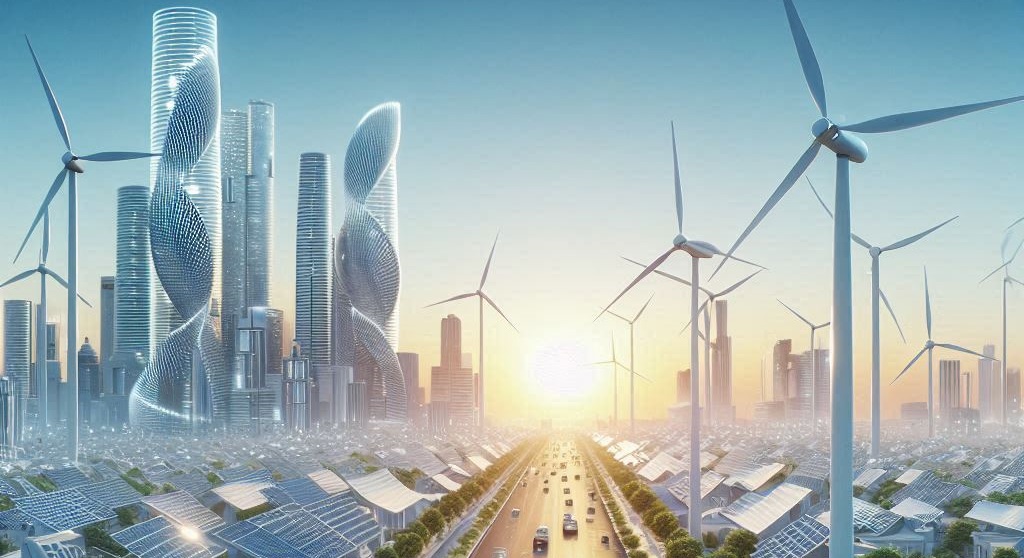As the world faces the pressing challenges of climate change and environmental degradation, the shift toward renewable energy technologies has become more urgent than ever.
Traditional fossil fuels, while historically central to global development, are now recognized as major contributors to greenhouse gas emissions and pollution. In contrast, renewable energy sources like solar, wind, and hydropower offer sustainable alternatives that can meet the world’s growing energy demands without harming the planet.
This article explores the future of renewable energy technologies, highlighting key innovations, potential challenges, and the broader implications for society and the environment.
Read More: The Rise of Influencer Marketing: How to Leverage Authentic Voices for Brand Success
1. The Rise of Solar Power
Solar energy has emerged as one of the most promising renewable energy sources. The past decade has seen significant advancements in solar technology, driving down costs and improving efficiency.
Photovoltaic (PV) cells, which convert sunlight directly into electricity, have become increasingly efficient, with some of the latest models achieving over 22% efficiency. This progress has made solar power more accessible and affordable, leading to widespread adoption across residential, commercial, and industrial sectors.
In the future, we can expect further breakthroughs in solar technology. Innovations such as perovskite solar cells, which have the potential to surpass the efficiency of traditional silicon-based cells, are on the horizon.
Additionally, the development of solar energy storage solutions, like advanced batteries and thermal storage, will address the intermittency issues associated with solar power. These technologies will enable solar energy to provide a more reliable and consistent power supply, even when the sun isn’t shining.
Furthermore, the integration of solar panels into building materials, such as solar roof tiles and windows, will make it easier to incorporate solar energy into everyday structures. This trend, known as Building-Integrated Photovoltaics (BIPV), is likely to play a significant role in the future of urban energy systems, transforming cities into self-sustaining energy hubs.
2. Wind Energy: Scaling Up and Innovating
Wind energy is another critical player in the renewable energy landscape. Over the years, wind turbines have grown larger and more powerful, with modern offshore wind farms capable of generating vast amounts of electricity. Offshore wind, in particular, is set to become a cornerstone of the global energy mix, thanks to its higher capacity factors and the availability of stronger, more consistent winds at sea.
The future of wind energy will likely see continued expansion of offshore wind farms, with floating wind turbines enabling deployment in deeper waters where traditional fixed-bottom turbines are not feasible. This technological advancement will open up new areas for wind energy production, significantly increasing the global capacity for wind power.
In addition to larger and more efficient turbines, innovations such as airborne wind energy (AWE) systems, which use kites or drones to harness wind at higher altitudes, are being explored. These systems could potentially access stronger and more reliable wind resources, further enhancing the viability of wind energy in diverse geographical locations.
Moreover, advancements in materials science, such as the development of lightweight and durable composite materials, will enable the construction of even more efficient and resilient wind turbines. These innovations will reduce the costs associated with wind energy production and maintenance, making it an increasingly attractive option for energy generation.
3. Energy Storage: The Key to Renewable Integration
One of the main challenges facing renewable energy technologies is the issue of intermittency. Solar and wind power, while abundant, are not always available when needed. This variability requires robust energy storage solutions to ensure a steady and reliable supply of electricity.
The future of renewable energy is closely tied to advancements in energy storage technologies. Lithium-ion batteries, currently the most common form of energy storage, have seen significant improvements in terms of capacity, cost, and lifespan. However, the future will likely see the rise of alternative storage technologies that offer even greater efficiency and scalability.
Solid-state batteries, which replace the liquid electrolyte in traditional batteries with a solid material, promise higher energy densities and improved safety. These batteries could revolutionize both the renewable energy sector and electric vehicles, providing longer-lasting and faster-charging energy storage solutions.
Another promising technology is flow batteries, which store energy in liquid electrolytes contained in external tanks. Flow batteries offer the advantage of being easily scalable, making them ideal for grid-level energy storage. Additionally, advancements in hydrogen storage and fuel cells present opportunities for long-term energy storage, enabling the excess renewable energy generated during peak production times to be stored and used when needed.
Beyond traditional battery storage, thermal energy storage systems, which store energy in the form of heat, are gaining attention. These systems can be integrated with solar thermal power plants or industrial processes, providing a flexible and cost-effective way to store and dispatch energy.
4. The Role of Artificial Intelligence and Smart Grids
The integration of renewable energy technologies into the power grid presents a complex challenge, particularly as the share of renewable energy continues to grow. To address this, the future of renewable energy will likely involve the widespread adoption of smart grids and artificial intelligence (AI).
Smart grids are advanced electricity networks that use digital technology to monitor and manage the production, distribution, and consumption of electricity. By incorporating AI and machine learning, smart grids can optimize the use of renewable energy, predict demand, and efficiently balance supply and demand in real-time. This capability is crucial for integrating variable renewable energy sources like wind and solar into the grid without compromising stability.
AI can also play a role in predictive maintenance for renewable energy installations. By analyzing data from sensors and other monitoring devices, AI systems can predict equipment failures before they occur, reducing downtime and maintenance costs. This predictive capability will be particularly valuable as the scale of renewable energy infrastructure continues to expand.
5. The Future of Hydropower and Emerging Technologies
While solar and wind power often dominate discussions about renewable energy, hydropower remains a vital part of the global energy mix. As one of the oldest and most established forms of renewable energy, hydropower continues to evolve with new technologies aimed at improving efficiency and reducing environmental impact.
The future of hydropower may involve the development of small-scale, decentralized hydroelectric systems that can be deployed in rivers and streams with minimal ecological disruption. Additionally, innovations such as pumped storage hydropower, which stores excess energy by pumping water to a higher elevation for later use, will play a crucial role in balancing the grid and supporting the integration of other renewable energy sources.
Emerging technologies like wave and tidal energy, which harness the power of ocean currents, also hold promise for the future. While still in the early stages of development, these technologies could provide a reliable and predictable source of renewable energy, particularly for coastal regions.
6. Challenges and Opportunities
Despite the promising advancements in renewable energy technologies, several challenges remain. The transition to a renewable energy future requires significant investment in infrastructure, research, and development.
Additionally, the raw materials required for some renewable energy technologies, such as rare earth elements for wind turbines and batteries, raise concerns about supply chain sustainability and environmental impact.
Moreover, the integration of renewable energy into existing energy systems requires careful planning and coordination to ensure grid stability and reliability. Policymakers, industry leaders, and communities must work together to address these challenges and create a supportive regulatory environment that encourages innovation and investment in renewable energy.
On the other hand, the shift to renewable energy presents numerous opportunities for economic growth, job creation, and environmental sustainability. As countries around the world set ambitious targets for reducing carbon emissions, the demand for renewable energy technologies will continue to rise, driving further innovation and expansion in the sector.
Conclusion
The future of renewable energy technologies is bright, with significant advancements on the horizon that promise to revolutionize how we generate and consume energy. From more efficient solar panels and wind turbines to advanced energy storage solutions and smart grids, these innovations will play a crucial role in transitioning to a sustainable, low-carbon energy future.
While challenges remain, the continued development and deployment of renewable energy technologies offer a pathway to a cleaner, more resilient, and equitable energy system. By embracing these technologies and addressing the associated challenges, we can ensure a future where renewable energy powers the world, protecting the planet for generations to come.








